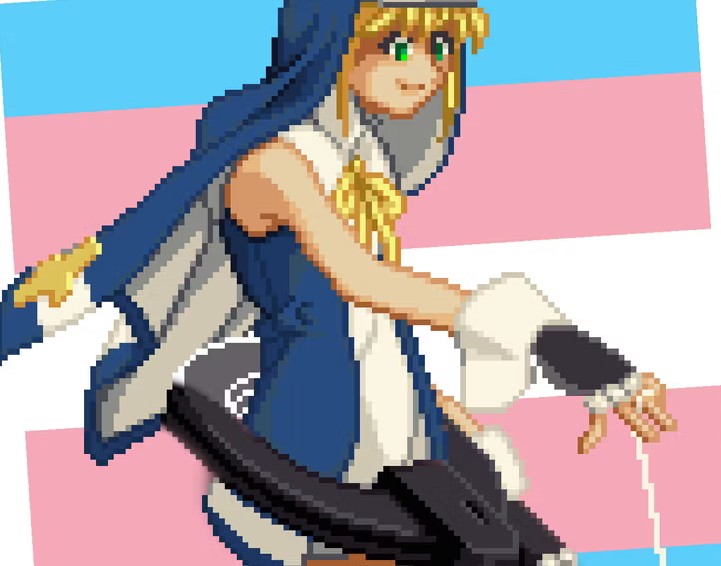Here are some educational resources/explanations for the games community about emulation and other game-related tools.
Note: Check my top-level replies in this thread as I ran out of text in the post
[Informational Resources]
Reddit’s ROM Megathread - Unaffiliated with this site
[Emulation as a field]
Emulation is the process of re-implementing the functionality of something (hardware and/or software) in a separate software environment. You’re probably most most familiar in the term as it relates to game system emulation- like the Dolphin Wii and Gamecube emulator, but it’s actually much broader than that.
While emulation does cover physical systems, it can also cover things that strictly exist as software. If you’ve ever played on WoW or any other MMO private servers, the actual underlying software that was being run was likely a server emulator (or in rare cases the actual official server software itself may have leaked or released).
These server emulators are created by analyzing the network information exchange (packets) sent from the game client to the server and those received by the client from the server. A painstaking and brutal process of analyzing these packets allows server reverse-engineering projects to then re-implement the functionality of the official servers, and then we can point the game client towards our reverse-engineered private server (that speaks the exact same “language” as the official servers). This then allows the private servers to provide additional or changed functionality (for example, more exp per quest) which allows a much more customizable experience.
Emulation can also be used to re-implement vendor solutions like the Steam API which provides various utilities like DRM (which the emulator could choose to ignore). A great example of an emulator in this regard is the Goldberg Emulator.
Let’s say you’ve acquired (through legal purchase only of course) the clean steam files for a game and want to run it offline. Normally you wouldn’t be able to because the steamworks DRM check wouldn’t be able to authenticate against the official steam servers. If we instead replace the steam_api.dll (this could also be named steam_api64.dll depending on the game) with the one provided by the Goldberg Emulator, when the game makes the check for the steamworks drm authentication status, the Goldberg Emulator’s implementation of steam_api.dll will simply return true and let us play our game offline. The game itself just knows that it asked for a DRM verification check to a service, and the Goldberg variant of steam_api.dll looks (to the game) exactly like the “real” version, except that it always returns that the steamworks DRM has been verified.
Refer to the readme within the Goldberg project for more information about what to do with specific games. Also take note that this only works with games that only use steamworks drm (most of them) and games using other/multiple DRM solutions won’t work with this method only for offline play.
[Console Emulators]
All of the emulators listed below are my personal per-console pick. Each is at least in the recommended section of a great general emulation resource, the Emulation Wiki
Game Platform | Emulator Name | Emulation Platform | Comments
Nintendo Consoles
NES | Ares | Windows/Linux/Mac
SNES | Ares | Windows/Linux/Mac
SNES | bsnes-hd | Windows/Linux/Mac | Widescreen modifications for some SNES games
N64 | Simple64 | Windows/Linux | Soon to be replaced by Gopher64 by the same developer (26/3/2025) N64 emulation has a lot of viable candidate emulators, check the page here
GC | Dolphin | Windows/Linux/Mac/Android
Wii | Dolphin | Windows/Linux/Mac/Android
Wii U | Cemu | Windows/Linux
Switch | Ryubing Ryujinx Fork | Windows/Linux/Mac/ Android/iOS | Continuation of the Ryujinx project by some of the original contributors
Switch | Yuzu | Windows/Linux/Android | Killed by Nintendo 3/4/2024
Nintendo Handhelds
GB/C | mGBA | Windows/Linux/Mac
GBA | mGBA | Windows/Linux/Mac
DS | MelonDS | Windows/Linux/Mac/Android
3DS | Azahar | Windows/Linux/Mac/Android | UPDATE 2/28/2025 Pablomk7 and Lime3DS forks have joined to work on Azahar
Sony Consoles
Playstation | DuckStation | Windows/Linux/Mac/Android
Playstation 2 | PCSX2 | Windows/Linux/Mac
Playstation 3 | RPCS3 | Windows/Linux/Mac
Playstation 4 | ShadPS4 | Windows/Linux/Mac | Heavily experimental and not for casual use yet
Sony Handhelds
PSP | PPSSPP | Windows/Linux/Mac/Android
PSVita | Vita3K | Windows/Linux/Mac
Sega Consoles
Sega Master System | Ares | Windows/Linux/Mac
Genesis | Ares | Windows/Linux/Mac
Saturn | Mednafen | Windows/Linux
Dreamcast | Flycast | Windows/Linux/Mac/Android
Microsoft Consoles
Xbox | Xemu | Windows/Linux/Mac
Xbox 360 | Xenia | Windows
Apple Phones
iOS 2.x | TouchHLE | Windows/Mac/Android
[Graphics Packs]
A lot of emulators have texture replacement capabilities built into them. What this means is that users can manually and/or AI upscale textures from the game into higher resolution or outright replace them with other textures. There aren’t currently (that I’m aware of) area that have consolidated links to these things, so you’ll unfortunately have to search individual project forums and look for texture or graphic packs links.
Some known graphics packs repositories:
Citra Forums Killed by Nintendo 3/4/2024; waiting for the dust to settle for recommendations
[Graphics API Translation Layers]
Sometimes there are scenarios where a game may only use DirectX to draw it’s rendered graphics to screen and we may not want this. This could be for performance reasons (maybe the Vulkan graphics api has better performance, maybe DirectX isn’t available on our OS, or maybe the DirectX version is really old and not properly supported by our OS/GPU/Driver combination). In these instances we can use translations layers to translate DirectX graphics api calls into Vulkan calls using utilities like DXVK . Explaining which files to copy over depends on a per-DirectX version basis, so you’ll have to use a combination of the PCGamingWiki and DXVK documentation to figure out which files to replace.
[Graphics Post-Processing]
With a utility called ReShade we’re able to inject various post-processing effects into the final stage of the graphic rendering pipelines of games. This allows you to adjust color curves, inject path-traced global illumination (a method like ray-tracing), and add a bunch of other effects to DirectX9/11/12/Vulkan games.


Xemu is making consistent progress and is worth checking out. Phantom Dust seems to be marked as playable so I’d definitely give it a shot. Insignia is an Xbox Live emulator that has made strides recently trying to revive functionality for a bunch of games so keep an eye on it.
Also because I’m not familiar with Phantom Dust care to share some about it?
It’s a difficult to explain game without playing it. It’s third person, you control a character where you go around an area picking up orbs that correspond to different abilities. The orbs are kind of like cards in a card game, all magic spells. You’ve got stuff like close range magic sword strikes, heals, buffs, fireballs, magic missile things. It’s awesome. A lot of the strategy in the multiplayer games is deciding if you should find orbs to level up your skills or go hunt down the other players before they get too powerful, it’s a neat balance.
The environments are great, really destructable. You can shoot a guy with a fireball into a concrete wall and it’ll make a big crater. You can knock over street lights and stuff too, it’s actually pretty impressive how good the environments and physics in a 2004 original Xbox game.